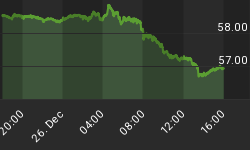Here is an extract from commentary posted at www.speculative-investor.com on 17th July 2003:
When it comes to money-supply growth there are two very popular views today that make no sense. The first is that the Fed isn't doing enough to stimulate money-supply growth while the second holds that even if a large increase in the money supply does occur it won't result in higher prices. The reasons we don't see anything resembling sense in such views are summarised below.
Claims that the Fed isn't doing enough to stimulate money-supply growth are absurd on a number of levels.
First, the Fed doesn't control the rate of increase of the broad measures of money supply (M2 and M3), the bond market does. The main engine of money-supply growth in the US over the past 8 years has been mortgage financing/re-financing and mortgage interest rates are determined by the bond market. The Fed, of course, does its level best to keep long-term interest rates at a low level.
Second, the problems facing the US today cannot be mitigated in any way, shape or form by higher money-supply growth because inadequate dollar supply is not part of the problem. In fact, the current predicament is partly the result of excessive dollar supply and actions taken to increase the money-supply growth rate can only make things worse. Refer to our recent article Will Higher Money Supply Growth Help? for a more detailed explanation of why higher money supply growth cannot possibly help.
Third, the current year-over-year M2 growth rate is high and the short-term, intermediate-term and long-term trends are most definitely UP (refer to the below chart).

Claims that higher money-supply growth won't be effective in stopping prices from falling are equally absurd. This is because it is not possible to substantially increase the supply of an item over an extended period and not have the item be worth a lot less than it would have been in the absence of the supply increase. It is possible for the effects of a substantial supply increase to be temporarily offset by a concomitant increase in demand, but in the case of the US$ the probability that a large increase in demand is going to occur over the next few years is extremely low. As it is, foreign central banks are continually having to step-up the rate at which they buy dollars in order to pick-up the slack resulting from falling private-sector demand for dollars.
We don't think there's any question that US$ prices are going to rise as a result of the on-going substantial growth in US$ supply. The only question we actually need concern ourselves with is: Which prices are going to rise?
You know that we think the main beneficiaries of the inflation during the current cycle will be gold and commodities (during the preceding cycle the main beneficiaries were financial assets). Price action has already gone a long way towards validating this view and moves above $400 and 265 by gold and the CRB Index, respectively, will leave no doubt that this view is correct.
Let's be clear, though, that we do NOT expect a replay of 1970s-style inflation over the next several years because the situation today is, in many important ways, very different to the way it was during the 1970s. Of particular note, today's debt levels are considerably higher and the fundamentals underpinning the stock market are considerably weaker. This means that the inflation is unlikely to keep the major stock indices flat, as it did throughout the 1970s, and probably means that real estate won't be a big winner. Also, the inflation should not be expected to bring about significantly higher prices in situations where there is massive over-capacity throughout the world. So there will be no point looking for the effects of inflation in, for example, memory-chip prices or the prices of the products that are either made in China or that compete with China-made products.
The bottom line is that high money-supply growth WILL cause prices to rise in the future just as it has always done in the past. The effects of the money-supply growth will not, however, be spread evenly throughout the economy. Our goal, therefore, is to be early in figuring out which sectors of the economy are going to be the main beneficiaries.
















